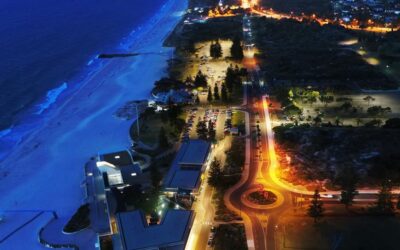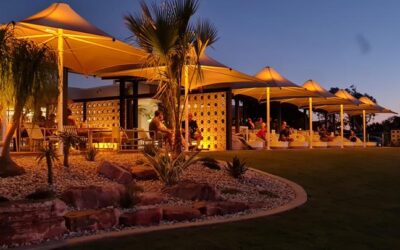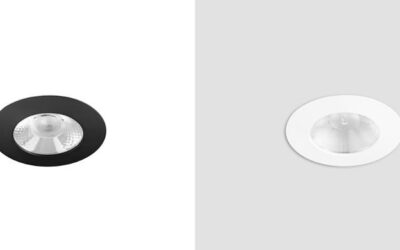Bathroom lighting needs to be safe and functional but can also be decorative and should include some ambient lighting such as dimmable LEDs for purposes such as relaxing in a bath.
LED lights are the most efficient light source for a bathroom, being bright and powerful while also energy-efficient and long-lasting. LEDs also light a larger area than halogen bulbs and give an even distribution of light.
LEDs are also available in a range of colour temperatures and colours. For task lighting in a bathroom, a neutral white (with Kelvin measurements 4000-5000K) or cool white (5000K plus) is recommended.
For lighting mirrors used for tasks such as applying make-up, shaving and brushing teeth, a good result can be achieved using bright and cool LED lights at eye level on either side of the mirror. Lighting placed above the mirror is best avoided as it will create a shadow effect which is neither functional nor flattering.
For powder rooms, a lower wattage can be used for task lighting as guests will likely be using the basin only to wash hands, brush hair or reapply lipstick. The colour temperature of the lighting should be aimed at making the room inviting and relaxing for guests.
With water splashing about, electrical safety is paramount in a bathroom to decrease the risk of electrical shock. Any electrical equipment in a bathroom needs to safely deal with condensation, steam and humidity as well as spray from showers. Select only lighting with the correct IP (ingress protection) rating for each bathroom zone as required under Australian Standards.
The first digit of an IP rating indicates a luminaire’s protection against ingress of foreign bodies (e.g. tools, dusts, body parts), while the second digit indicates the level of protection. For example, IP44 offers protection against solid objects larger than 1mm and water spray from every direction.
An experienced lighting supplier will be able to advise on which lamps and fittings have the appropriate IP rating for each of the three designated bathroom zones.
If a bathroom design includes artwork or niches for the display of decorative items, these can be highlighted using accent lighting such as recessed directional lights. A striking pendant light and wall sconces are other additions to bathroom lighting that can create a strong design impact.
Indirect lighting, with fixtures hidden in architectural details such as a beamed ceiling or cantilever detail, can be used to create atmospheric lighting effects.
Layering the lighting and putting each light source or a combination of light sources on different switches allows occupants to choose the level of illumination they desire at any given time.
The right bathroom lighting can enhance not only the design of the space and architectural details but the lifestyle of the occupants and their enjoyment of the space.




